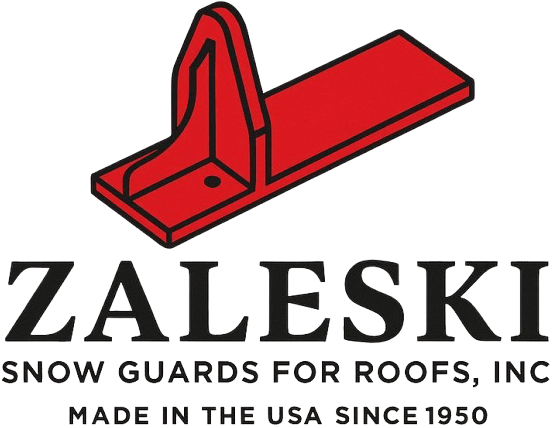Tools and materials you need to install snow guards are: Snow guards, adhesives, tape measurer, chalk or marker, rubbing alcohol ( to clean snow guards) and safety equipment ( gloves, safety glasses, etc.)
You may come across information suggesting that you screw snow guards to your roof, while this may be fine for some snow guard companies, Zaleski snow guards never recommends using screws and we encourage you to use adhesive to adhere snow guards to your roof for the obvious reason of NOBODY wants holes in their roof. So to ensure the longevity of your roof we recommend using adhesive, always!
Let’s talk about what causes an avalanche. When it snows there is a strong temperature-sensitive bond between the snow and the roof. When there is a snowstorm and it ends there are infrared rays from the sun that pass through the pack of snow. It warms the roof and frees the bond, which create a melting water causing the snow to melt and slide.
Calculating the load is based on the design of the roof and the snow load, the slope of the roof and the length of the roof (eave to ridge). These 3 factors determine the force that the system must resist for any type of roof and should always be included in the spacing calculation.
The steepness of your roof determines how the snow will behave and where your snow guards should be placed. The steeper roofs may require more snow guards and to have them staggered in placement to effectively hold back accumulation of the snow.
When you are ready to install the snow guards be sure to inspect and clean your roof. Making sure all debris, moss, algae, etc is cleaned up and that the surface is completely dry before beginning your project.
Snow guards should be installed around any objects such as skylights, vents, chimneys, satellites, etc. Determining the pitch is essential for roof maintenance and snow guard installation. The roof pitch refers to the steepness or the slope of the roof. One way to determine the pitch is by using a pitch guage. If the tool provides an angle in degrees, you can convert it to pitch ratio. You can also measure manually by measuring the rise and the run, Measure the vertical rise (height) from base to peak (ridge). Now measure the horizontal run (length) from base to point directly below the peak. Lastly, divide the vertical rise by the horizontal run. This will give you the pitch. You can also use a level and tape measurer. Place the level horizontally on the surface of the roof, ensuring it is leveled. Measure the vertical rise from the roof surface to the level, measure the horizontal distance (run) from the point directly below the level to the roof surface. Divide the rise by the run to determine the pitch.
